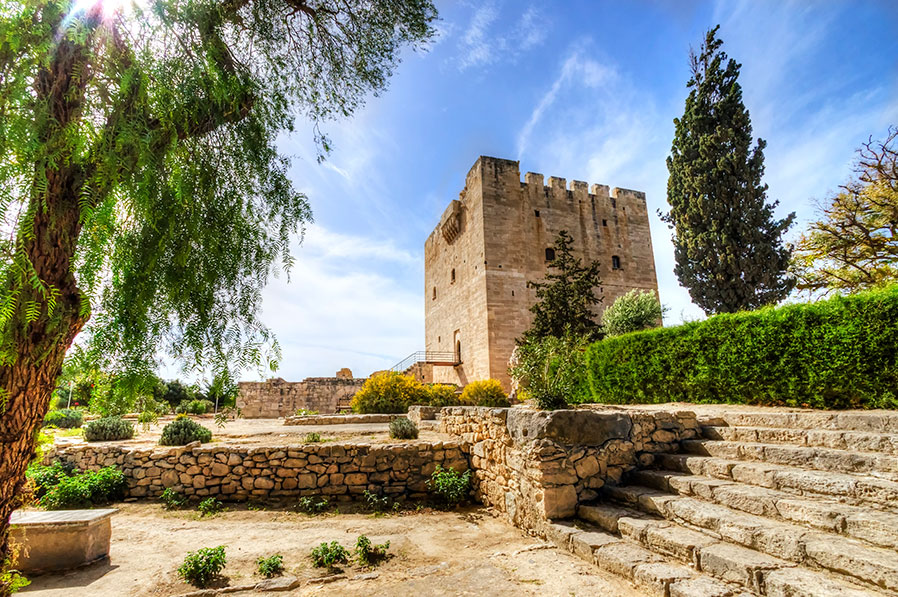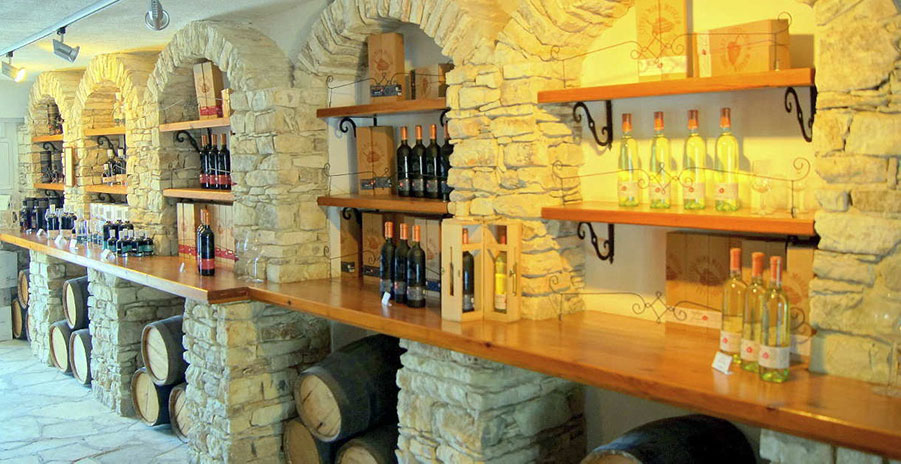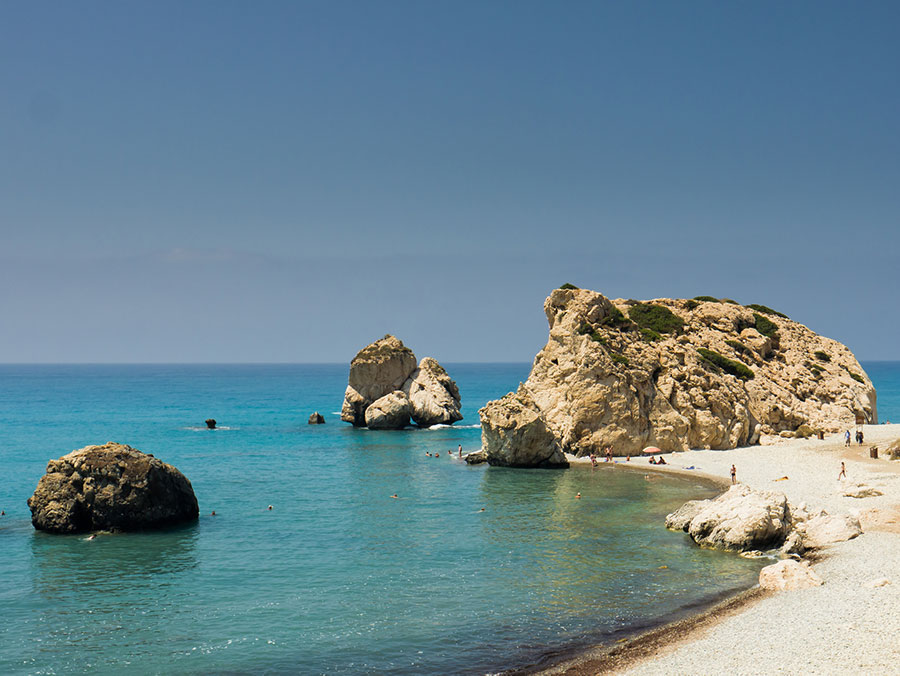
24 Juil Aroma of an ancient Goddess
Introduction
Aphrodite, the beloved goddess of love, beauty and procreation was an emblem in antiquity of what women wanted to be, and how they wanted to be perceived by men. This popular goddess had a complex Persona with many layers to peel back. Initially, you might think of her as a perfect and feminine being but eventually you learn unexpected things, like the fact that during the course of a short love affair she had with the god of wine, Dionysus, she persuaded him to teach her how to cultivate grapes and turn them into wine. You can still enjoy the result of that happy union every time you sip a wine made of those same Cyprus-born grapes.
Cyprus longstanding tradition of winemaking needs no further proof than its claim to the world’s oldest named wine still in production “Commandaria”, proclaimed by Richard the Lionheart as the “wine of the kings and the king of the wines.”
Cyprus wine museum
Morning drive through the citrus groves of Phassouri village with destination the amazing Cyprus Wine Museum located in Erimi village. Erimi village, with a history of 5500 years of wine making sits at the crossroads of the wine routes of Cyprus.
The village is in close proximity to the prehistoric settlement of Sotira, where the oldest remains of grape seeds have been found and near to Kollosi Castle, a medieval Commanderie of The Hospitaller Knights who were the first to produce Commandaria Wine.
The Cyprus Wine Museum is a tribute to the wine history of the island. Get to know about the 5500 thousand years of wine culture in Cyprus, enjoy wine tasting and “sense” the environment by listening to music pieces especially written for specific wines available for sale at the museum.

Myths & legends – Aphrodite’s birth
Legend has it that following a dispute between the god of time, Cronus, and his father Uranus, Cronus cut off Uranus’ genitals and threw them into the sea. Out of the foam (aphros) of the fertilised waters, the birth of Aphrodite took place.
The naked goddess, carried by a gigantic scallop shell, was washed ashore on a pebbled beach of the ancient town of Paphos right next to a giant rock formation that sits gracefully offshore. As she lightly stepped ashore, the arid sand was changed into a verdant meadow and the loveliest flowers sprang up at every step of her delicate feet. The myth combined with the scenery has provided numerous famous poets and artists with beautiful inspirations to create artworks. One such artwork is Boticelli’s famous painting “Birth of Venus”.
Aphrodite’s birthplace
Aphrodite’s mythical birthplace, Petra tou Romiou also known as Aphrodite’s Rock, is an interesting geological formation of huge rocks along one of the most beautiful coastlines on the island at the southwest coast of Pafos (PALAIPAFOS – Kouklia village). “Petra tou Romiou” meaning the Rock of the Greek, is also associated with the legendary Byzantine hero, Digenis Akritas.
According to legend, the hero in his effort to keep the invading Saracens Arabs (7th-10th centuries) at bay, he grabbed a huge rock and tossed it into the sea. A large, imposing rock accompanied by several smaller rocks, emerge from the sea in that area.
At this very spot, “Aphrodite” awaits you! She will emerge from the sea and welcome you to her beloved island. In this unspoiled beach, you will collect heart shaped stones and write love messages on the sand.
At the nearby village of Kouklia walk into one of the many local taverns in the centre of the village and order “Cyprus Meze” consisting of various grilled meat or fish dishes, salads and dips. Complement your lunch with additional local traditional dishes made with ingredients related to wine; ask for KOUPEPIA (vine leaves stuffed with rice, ground pork or veal, fresh herbs and seasoning, cooked in a tomato sauce) and AFELIA (small pieces of pork cooked with red dry wine and crushed coriander. Enjoy…

Aphrodite’s temple (the Sanctuary of Aphrodite)
In historical times, the goddess had several sanctuaries on the island, the most famous being in Palaipafos at Kouklia village, a place called « omphalos of the earth », on an equal footing with Delphi (Hesychius). Archaeological findings have confirmed the legend.
The remains of the Sanctuary of Aphrodite date back to the 12th century BC while a great number of writers, including Homer, once referred to the sanctuary as the most valued temple in the world. In the area there is a museum housed in a medieval mansion, exhibiting many interesting finds from the excavations.
The ancient ruins that remain of Temple of Aphrodite are a perfect destination for history enthusiasts. This was the first site on the island included on UNESCO’s World Heritage List for its diverse past, religious significance and potential as an archeological site.
Aphrodite will follow you to her temple and welcome you to her “house”. Capture the seductive scents of the goddess ancient aromas of oak moss, citrus bergamot and labdanum or rockrose.
Sacred gardens of Aphrodite – Yeroskipou
Once famous for its sacred gardens, dedicated to the Goddess Aphrodite, these days the village of Yeroskipou (Geroskipou) is best known for its production of the famous desert Cyprus Delight (also known as Loukoumi and Turkish Delight).
These powdered sugar-coated candies are traditionally flavoured with rose water but are also produced in a number of other unique flavours making them an ideal souvenir. In the square of the village you will have the opportunity to observe how these sweets are made and try some.
Additional highlights of the small village include the church of Agia Paraskevi, celebrated for its medieval paintings and icons and the Folk-Art Museum.
The little church of Agia Paraskevi is worldwide recognised as an extremely significant example of Byzantine architecture dated to the 9th century A.D.


